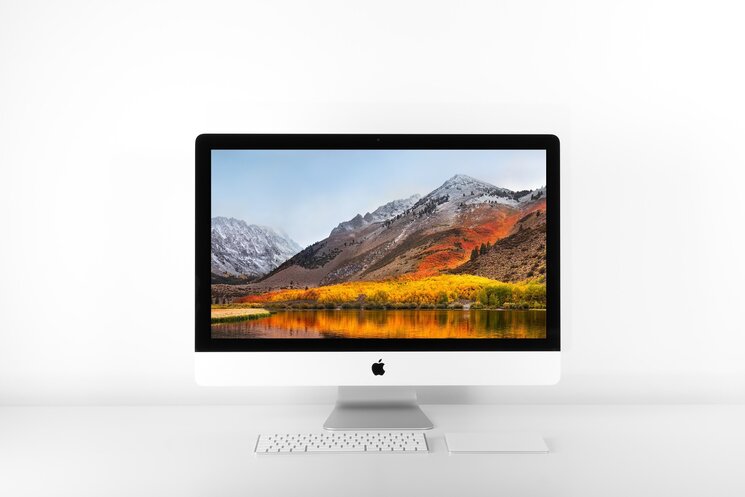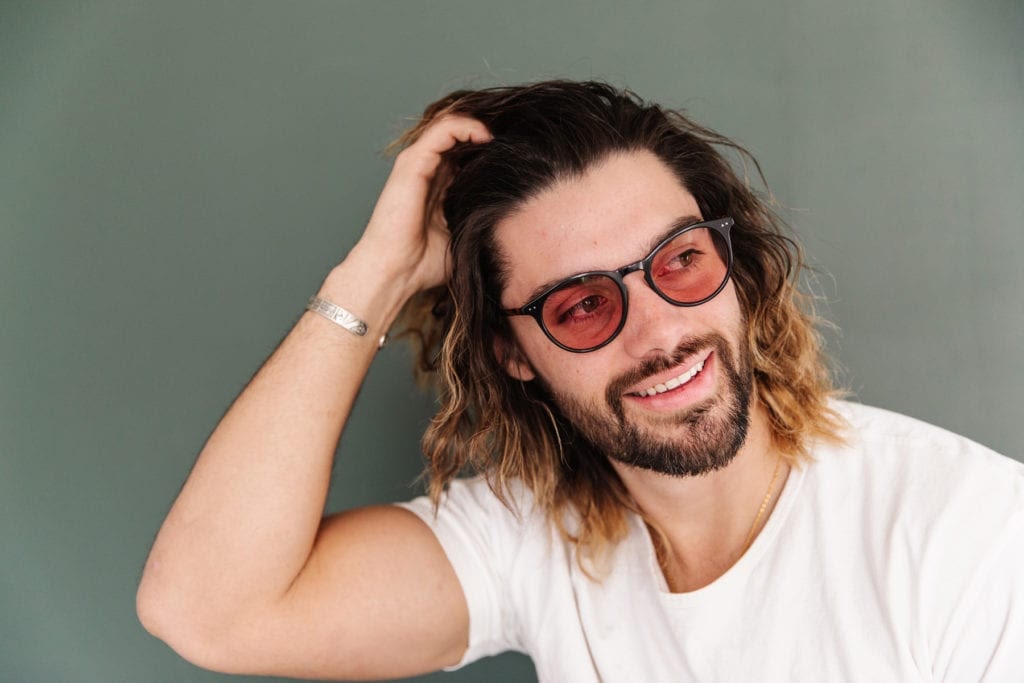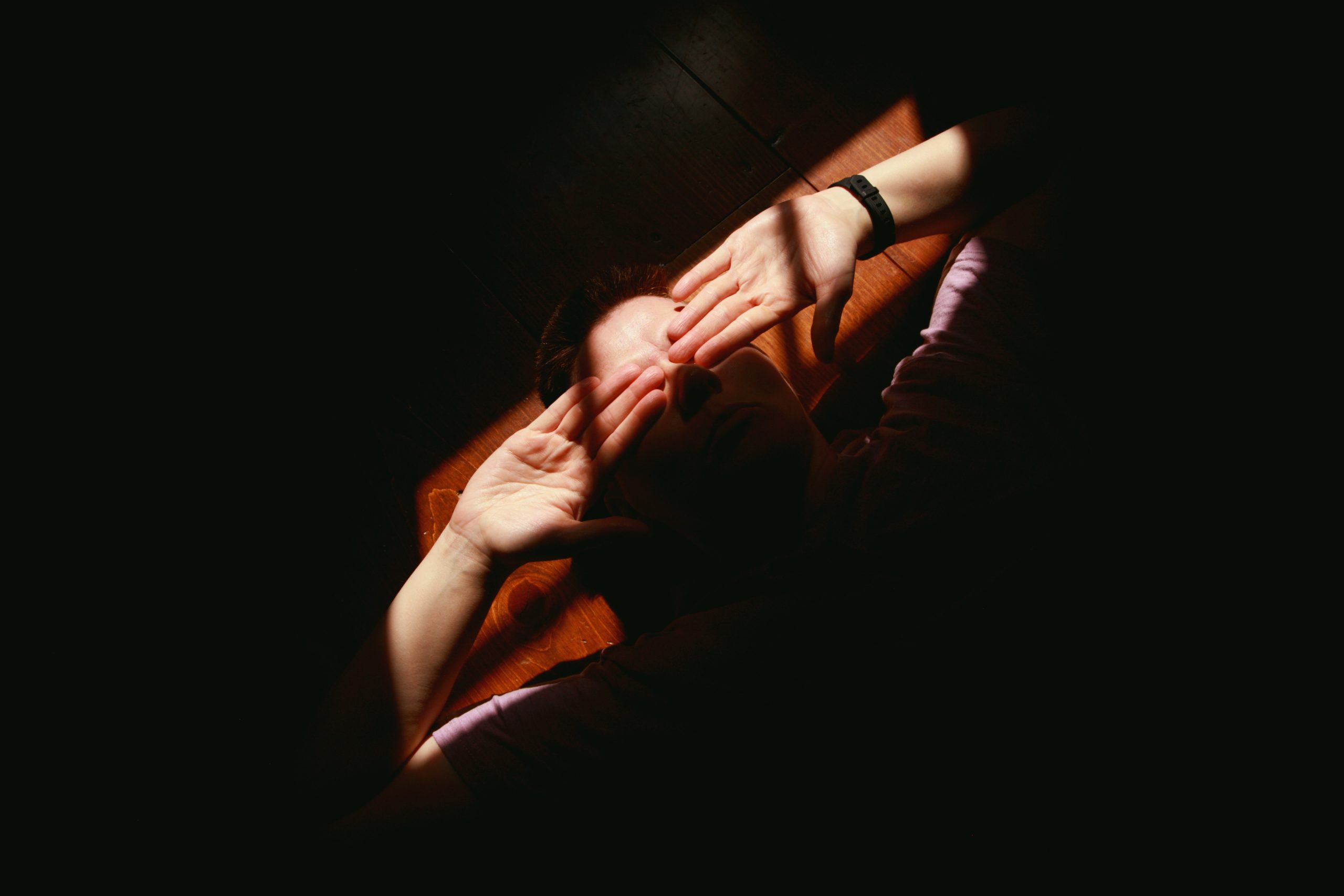The name might sound like a fighter jet, but FL-41 tint has nothing to do with going to battle. FL-41 lenses were originally designed to combat the flickering fluorescent lights of the 80s and 90s. FL-41 tinted lenses have often been called migraine glasses, and lens technology has evolved since the 80s to block even more of the light that is most harmful to those living with migraine and light sensitivity. Migraine glasses are a simple tool that can make a big difference.
FL-41 tinted lenses originated in the 1990s to help with fluorescent lights. Since then, a new clinically proven lens technology has been developed called the Avulux Migraine & Light Sensitivity lens and it’s used to help with light sensitivity and migraine — a disorder that affects 1 in 4 households in the United States. And while a lot of things can bring on a migraine attack, it turns out that light is one of the most common triggers.
What does all of this mean for you? Well, if you’re among the more than 90% of migraineurs who are sensitive to light, the Avulux migraine lens can be an incredible tool. We’re here to tell you why these tinted glasses are important, how they work, and who should probably be wearing them.
Bright Light is a Big Trigger — Avulux Can Help

As the vast majority of migraine sufferers can tell you, bright light can be a major trigger. The source of that light also makes a difference, presenting a big obstacle for migraineurs living in the modern world. For example, some of the worst offenders for light sensitivity and migraine symptoms include:
- Computer monitors
- TV screens
- Smartphone screens
- Fluorescent lighting in stores and offices
- Other non-incandescent lighting such as CFL bulbs
- LEDs
For many, fluorescent lighting is particularly troublesome because of the invisible flickering effect it creates. All by itself, this flicker is enough to create photophobia symptoms — such as headaches or migraine attacks — in some people.
Notice how all these types of light are generally found indoors. Forgive the bad pun, but this is where the Avulux lens really shines.
In fact, Axon Optics glasses powered by Avulux lenses take light filtration technology further than others (more on that later). Over 85% of Axon Optics users report a reduction in headache and light sensitivity impact with our upgraded lenses.
“These tinted glasses make all the difference. They allow me to comfortably work indoors…”
-Patsy
“I suffer from migraines frequently. I work in a hospital and go to pharmacy school so I am exposed to plenty of screen time and fluorescent lights a lot of the time triggering my migraines. When I wore my glasses to the first few days of work I was able to continue working the whole day! My eyes felt calm and I felt no discomfort when wearing my glasses…As a 23 year old who gets at least 10 migraines a month and pretty severe ones too this purchase has made a difference in my light sensitive eyes.”
-Meagen
“This is my second pair of glasses from Axon Optics. These have everything—they’re lightweight and comfortable, and they are also extremely effective at managing my photosensitivity. I notice a very real difference when I’m not wearing my Axons.”
-Sara
What Is FL-41 and How Does It Work?
As you have probably gathered by now, FL-41 is a precise, blue-light-blocking tint designed to be used in lenses for light sensitive people. They are commonly used as migraine glasses by those who suffer from them, as well as by others with light sensitivity. They came to be in the 1980s, when Dr. Arnold Wilkins of Cambridge University had patients complaining of eye strain and headaches from fluorescent lights. He wanted to help them, so he worked to develop an eyeglass tint to reduce the specific light wavelengths emitted by fluorescent bulbs. His team called the tint Fluorescent-41, or FL-41.
Over the last 10 years or so, as scientific understanding of photophobia has increased, so has the availability and popularity of FL-41 lenses. They’re popular because they’re common and easily made. However, the tint only blocks blue light, and research has since been released that shows that people with migraine light sensitivity are negatively affected by blue, amber, and red light (whereas a narrow band of green light can actually soothe symptoms). These blue, amber, and red wavelengths have been shown most likely to trigger or worsen photophobia and related symptoms like migraine, nausea, dizziness and anxiety. When compared to FL-41, Avulux Migraine & Light Sensitivity lenses block even more blue light, at up to 97% of blue, amber, and red light, while allowing over 70% of soothing green light through.
If you have light sensitivity, we don’t need to convince you how problematic specific types of light and flickering can be.

What Does the Science Say About Migraine Glasses?
In England in the early 1990s, FL-41 tint was part of research into how the tinted lenses might help kids with migraine. Researchers learned that wearing FL-41 lenses improved light sensitivity and reduced the frequency and severity of migraine attacks. In the study, those who wore FL-41 lenses saw a reduction in migraine episodes from 6.2 per month to 1.6 per month. That’s a pretty big difference! This and other studies show that FL-41 glasses are an effective migraine treatment, with ongoing research that reaffirms earlier findings.
Fast forward to the late 2000s. Dr. Bradley Katz, neuro-ophthalmologist and co-founder of Axon Optics, took things a little further. He was inspired by research indicating that FL-41 works well, but could be improved. He supported in modifying the lens to block even more light, and his involvement led to the creation of the Avulux Migraine and Light Sensitivity lens. He then conducted a study using the updated version on patients with blepharospasm (BEB). With the altered tint, patients saw an improvement in their conditions with involuntary eyelid movements decreased.
Dr. Katz talks more about it here:
What Makes Avulux Better Than Sunglasses
Sunglasses are great for what they’re meant to do: block all types of light to protect your eyes from UV rays. A good pair of sunglasses is really important, especially if you’re light sensitive. However, wearing sunglasses indoors as a protective measure for photophobia isn’t recommended. Habitually wearing sunglasses indoors may actually dark adapt your eyes and make your sensitivity worse in the long run. Unless you’re a bear, hibernating in the dark shouldn’t be part of your normal life.
For this reason, Axon Optics powered by Avulux lenses is best for indoor lighting conditions. They’re designed to block only the harmful types of light and let the rest in, so dark adaptation won’t be a problem. Avulux lenses give you an extra measure of protection from not only bright UV light, but blue, amber, and red light specifically.
Choosing the Right Source for Avulux Lenses
Let’s go back to Dr. Katz and his 2016 study on his updated migraine glasses. Because of his research, Axon Optics has been able to support on making improvements to lenses to better help people with migraine and light sensitivity. Dr. Katz actually pioneered many of the studies Axon Optics competitors cite as evidence. But with his continued guidance as our co-founder, we’ve significantly upgraded the original tint for maximum relief.

Indeed, studies have proven that not all FL-41 glasses are created equal. Just look at the different color of the glasses that claim to be FL-41 migraine glasses. Avulux lenses are not only different, but better at blocking the harmful light while letting in the good. But we don’t just leave well enough alone.
Axon Optics powered by Avulux's precision-tinted lenses provide a big upgrade to the FL-41 tint. We are also extremely careful about how our eyewear is made, using only premium materials with lenses completely made in the USA.
When it comes to the impact light sensitivity and symptoms like migraine have on your life, we believe our customers want and deserve the very latest research and best results. This is why we test our eyewear and continue to push our technology based on what science tells us. We want you to experience fewer symptoms of light sensitivity so you can live life with less pain.
Who and What are Migraine Glasses for?
We’ve been talking about how Avulux lenses may help people with migraine by blocking light and preventing light from worsening their symptoms. However, that isn’t their only application. This very precise tint may also help ease some other conditions that have shown to be triggered or worsened by light.
Blepharospasm
Blepharospasm (BEB) describes involuntary or abnormal contracting or twitching of the eyelids. It often subsides on its own, but could become a chronic condition. It usually begins with small, occasional eyelid twitching.
Over time it may begin to occur more often, and worsen to the point where it causes your eyes to completely shut. Naturally, this is not only incredibly annoying, but presents a real problem when you’re trying to work, drive, or read.
Anyone might experience a twitching eyelid. This doesn’t necessarily mean you have blepharospasm. Dry eye, stress, excess caffeine (back away from the Red Bull), or fatigue could be to blame. In these cases the issue will usually go away on its own.
But other times, blepharospasm may occur due to other conditions like Tourette syndrome (a tic disorder), Parkinson’s disease or Meige syndrome (which involves additional abnormal, involuntary movements of the jaw and tongue). Certain medications can also trigger it as a side effect. If your eyelids twitch for more than a few weeks, keep closing completely, or involve other parts of your face, you’ll want to see your doctor.
Light-Triggered Seizures
Some people with epilepsy are light sensitive, meaning their seizures may be triggered by bold, intense, or flashing lights. Common triggers for these people include:
- Playing video games
- Bold-colored patterns like stripes and checkerboards
- Sun shining through the trees or bouncing off a lake
- Police or ambulance lights
- Camera flashes
- Fireworks
There are medications available to reduce seizure risk, but those who have light sensitive epilepsy should also do what they can to minimize exposure, including blocking offending light with tinted lenses.
Computer Vision Syndrome

The average worker in the US spends about 7 hours per day on the computer, whether in an office or working from home. Also called digital eye strain, computer vision syndrome (CVS) describes vision or eye problems that arise from prolonged use of computers, tablets, smartphones, or e-readers.
Obviously, this is a big part of most of our lives. But here’s the issue. Digital screens are visually demanding. Glare, reflections, and reduced contrast (as opposed to paper) have a way of making your eyes work harder. If you spend 2 to 3 hours continually looking at a digital screen every day, you’re more likely to develop CVS. Symptoms include:
- Headaches
- Blurry vision
- Dry Eyes
- Neck and shoulder pain
Even if you aren’t particularly light sensitive, you may develop CVS and associated symptoms. If these symptoms sound familiar and you spend a lot of time on a computer, you may benefit from Axon Optics glasses powered by Avulux lenses for computer use.
Other Conditions
There are actually 50 known conditions which have been associated with light sensitivity. Here are just a few of them:
- Albinism
- Anxiety
- Concussion
- Depression
- Fibromyalgia
- Inflammatory bowel disease
- Lyme disease
- Magnesium deficiency
- Meningitis
- MS
- Rabies
- Retinal disease
- Sjogren’s syndrome
- Trisomy 21 (Down Syndrome)
If you don’t have any of these conditions, but feel like artificial light or digital screens make you feel poorly or bother your eyes, you can probably benefit from Axon Optics powered by Avulux lenses and our exclusive advancements in lens technology that support people with migraine and light sensitivity. Try them with our 60 day return policy.
Source: Wilkins AJ, Wilkinson P. “A tint to reduce eye strain from fluorescent lighting? Preliminary observations.” Ophthalmic Physiol Opt. 1991 Apr;11(2):172-5.
Source: Good PA, Taylor RH, Mortimer MJ. “The use of tinted glasses in childhood migraine.” Headache. 1991 Sep;31(8):533-6.
Source: Hoggan RN, Subhash A, Blair S, et al. Thin-film optical notch filter spectacle coatings for the treatment of migraine and photophobia. Journal of clinical neuroscience : official journal of the Neurosurgical Society of Australasia. 2016;28:71-76. doi:10.1016/j.jocn.2015.09.024.
Source: M. Tatsumoto, T. Eda, T. Ishikawa, M. Ayama, K. Hirata “Light of Intrinsically Photosensitive Retinal Ganglion Cell (ipRGC) Causing Migraine Headache Exacerbation.” IHC symposium OR3. 2013 June.





